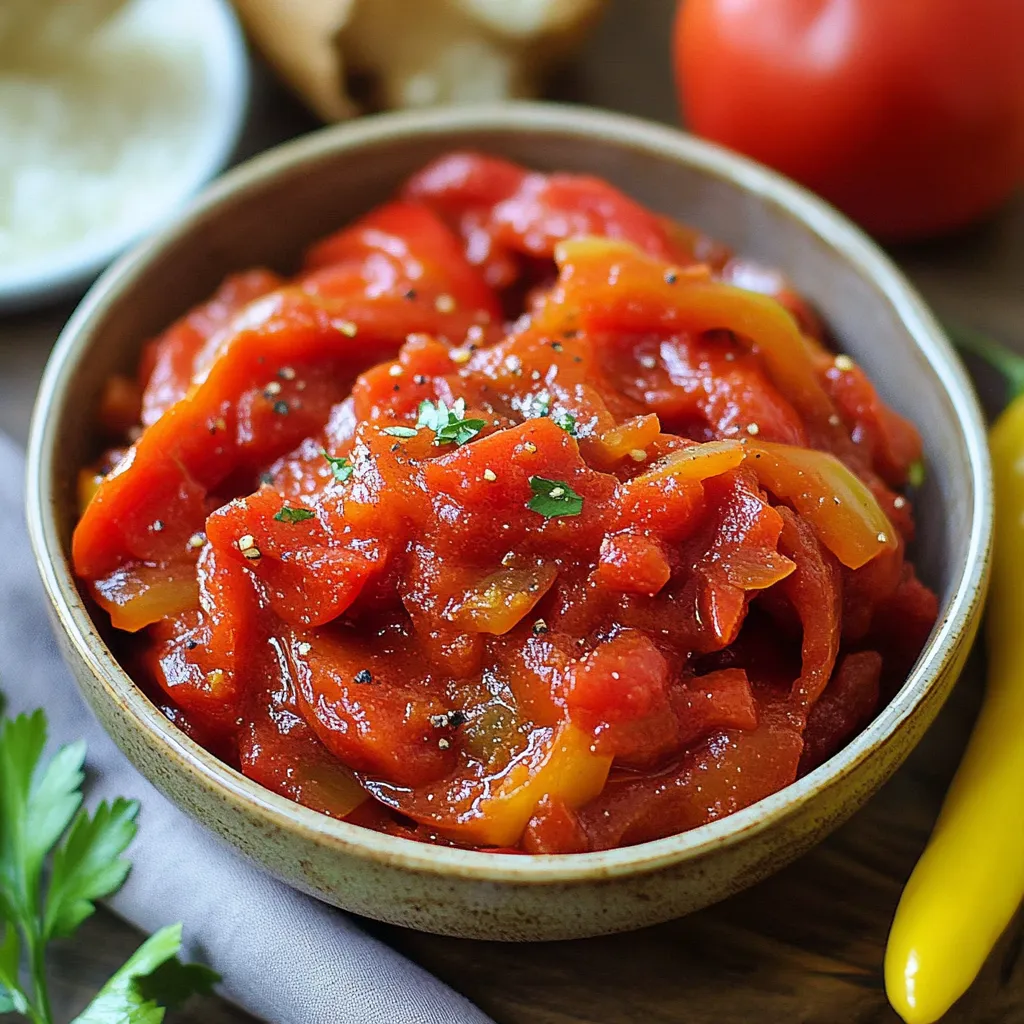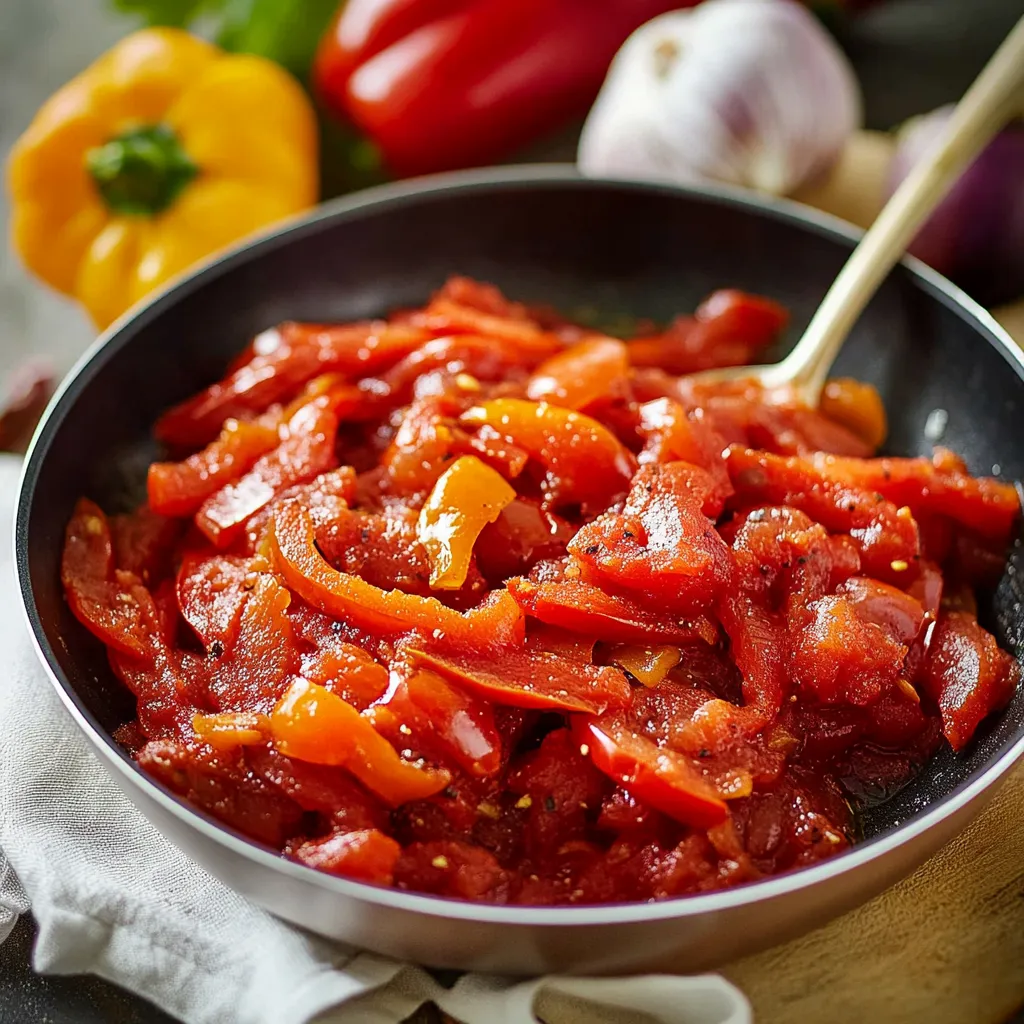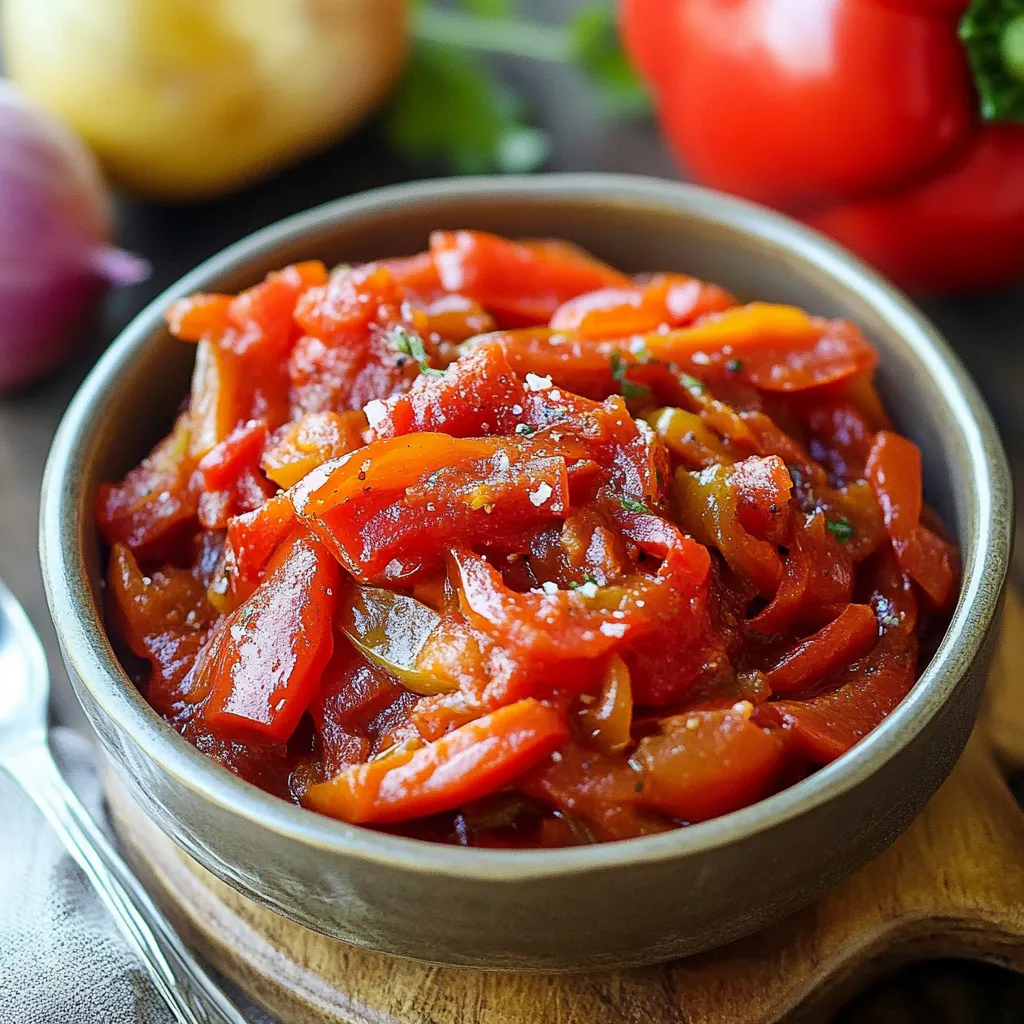 Pin it
Pin it
Traditional Italian Peperonata transforms simple vegetables into a symphony of Mediterranean flavors. Bell peppers slowly simmer with onions and tomatoes until they develop a meltingly soft texture and concentrated flavor profile. The natural sweetness of the peppers combines with acidic tomatoes and aromatic garlic, creating a versatile vegetable stew that works beautifully across multiple dishes.
I first encountered peperonata while traveling through southern Italy. The local trattoria served it alongside crusty bread as an antipasto. The vivid colors immediately caught my attention, but the depth of flavor completely won me over. Ever since then, it's become my go-to dish when entertaining guests who appreciate simple yet sophisticated food.
Essential Ingredients
The Building Blocks
- Bell peppers: Provide sweet, earthy flavor. Choose red, yellow, or orange varieties for natural sweetness.
- Yellow onions: Deliver aromatic sweetness. Slice them relatively thin for proper melting.
- Fresh garlic: Adds necessary pungency. Mince finely to distribute flavor without overwhelming bites.
- Tomato passata: Creates the silky base. Look for brands with no additives for pure tomato flavor.
Flavorful Additions
- Extra virgin olive oil: Infuses richness. The quality significantly impacts final flavor.
- White wine vinegar: Provides brightness. The acidity balances the natural sweetness.
- Granulated sugar: Balances acidity. Even a small amount transforms the sauce.
- Salt and pepper: Enhance every element. Use kosher salt for better distribution.
Cooking Instructions
- The Flavor Foundation:
- Warm extra virgin olive oil in a large, heavy-bottomed skillet over medium heat. Add sliced onions with a generous pinch of salt, stirring occasionally to prevent browning. Cook until translucent and sweet, approximately five minutes.
- Vegetable Melding:
- Introduce sliced bell peppers and minced garlic to the softened onions. Reduce heat slightly to prevent scorching. Cook mixture for ten minutes, stirring periodically to ensure even cooking.
- Simmering Development:
- Pour tomato passata over the vegetable mixture, stirring to incorporate completely. Cover the pan with a lid and reduce heat to maintain a gentle simmer. Cook for twenty minutes, checking occasionally.
- Final Flavoring:
- Remove lid and stir in sugar and vinegar. Allow mixture to simmer uncovered for five additional minutes to concentrate flavors. Taste mixture and adjust salt and pepper as needed.

Growing up, my grandmother would prepare massive batches of peperonata during summer when peppers were abundant in her garden. She taught me that allowing the vegetables to cook slowly was essential for developing proper flavor. Even today, the aroma of simmering peppers instantly transports me back to her kitchen.
Perfect Pairings
Peperonata transforms ordinary meals into memorable experiences. Toss with al dente pasta and finish with torn basil and grated pecorino for a simple weeknight dinner. Serve alongside grilled sausages, where the sweet-acidic vegetable mixture complements rich meat perfectly. Spread over toasted sourdough topped with creamy burrata cheese for an elevated appetizer. Layer into sandwiches with prosciutto and fresh mozzarella for gourmet lunches.
Creative Adaptations
Personalize peperonata to suit various preferences and dietary needs. Introduce diced eggplant during the pepper cooking stage for additional Mediterranean flair. Add crushed red pepper flakes for pleasant heat. Incorporate capers and olives during the final cooking phase for briney depth. Fold in diced zucchini with the peppers for additional variety. For protein enhancement, add cannellini beans during the final five minutes.
Leftovers Guidance
Peperonata improves dramatically with time as flavors meld together. Store completely cooled peperonata in airtight glass containers in the refrigerator for up to five days. Portion cooled peperonata into freezer-safe containers, leaving half-inch headspace, then freeze for up to three months. Thaw frozen portions overnight in the refrigerator before gently rewarming. Refresh refrigerated leftovers with additional fresh herbs and a splash of olive oil before serving.

My appreciation for peperonata has only deepened over years of cooking. What began as a simple side dish has become one of my signature recipes. The balance of sweet peppers with tangy tomatoes creates a versatile foundation that adapts to countless meals. I find the rhythmic chopping and slow simmering to be almost meditative, and the resulting dish never fails to elicit praise from family and friends.
Recipe FAQs
- → Can I make Peperonata ahead of time?
- Yes, Peperonata tastes even better the next day as the flavors develop. Store it in the fridge for up to 3 days.
- → What type of peppers work best for Peperonata?
- Red bell peppers are ideal as they're the sweetest, but you can also use yellow or orange peppers. Avoid green peppers as they're less sweet.
- → How do you serve Peperonata?
- Serve it warm or at room temperature as a side dish, on crusty bread, or as part of an antipasto platter.
- → Why is my Peperonata taking longer to cook?
- Cooking time varies depending on the thickness of pepper strips and heat level. The peppers should be very tender but not mushy.
- → Can I freeze leftover Peperonata?
- Yes, Peperonata freezes well. Store in an airtight container for up to 3 months.
